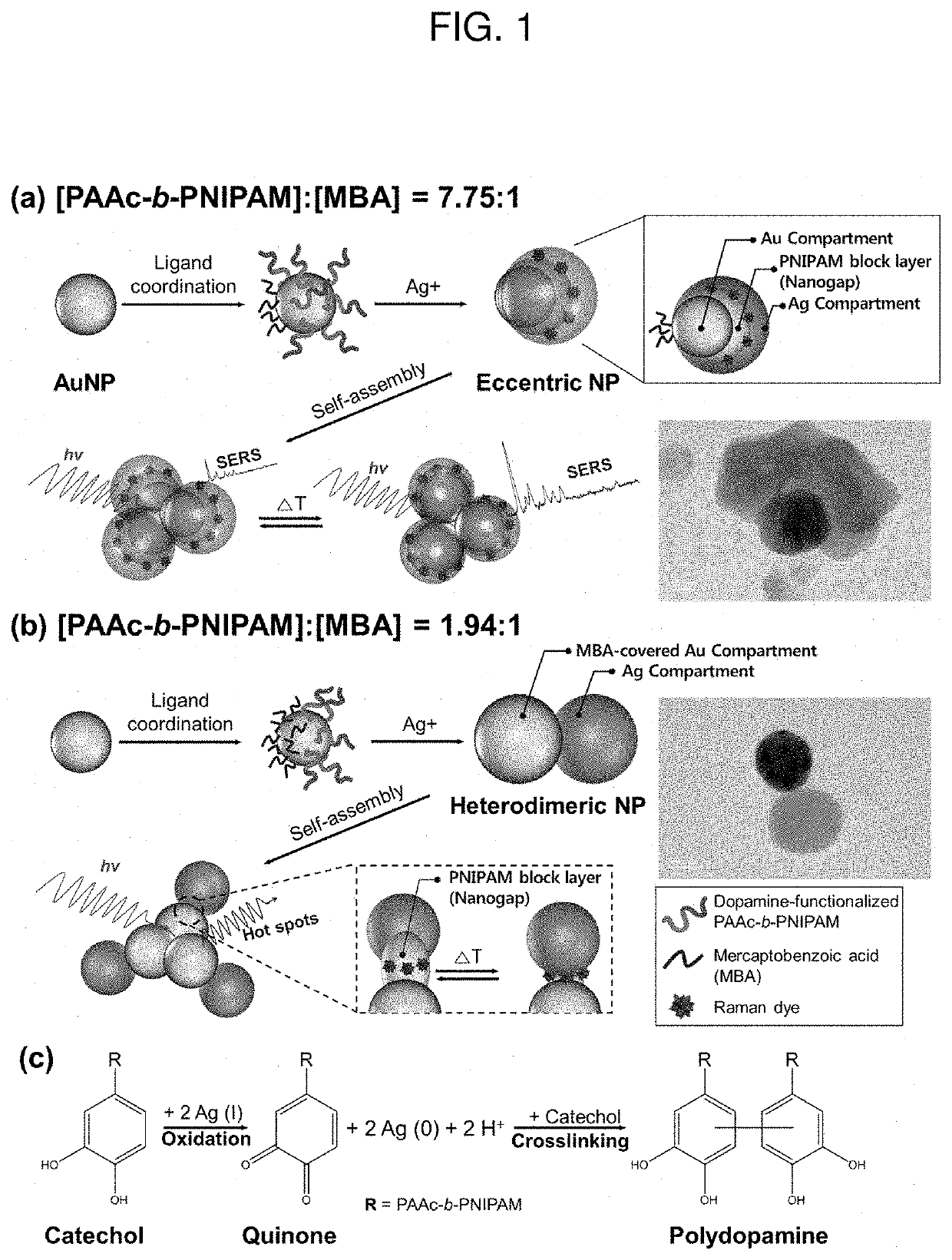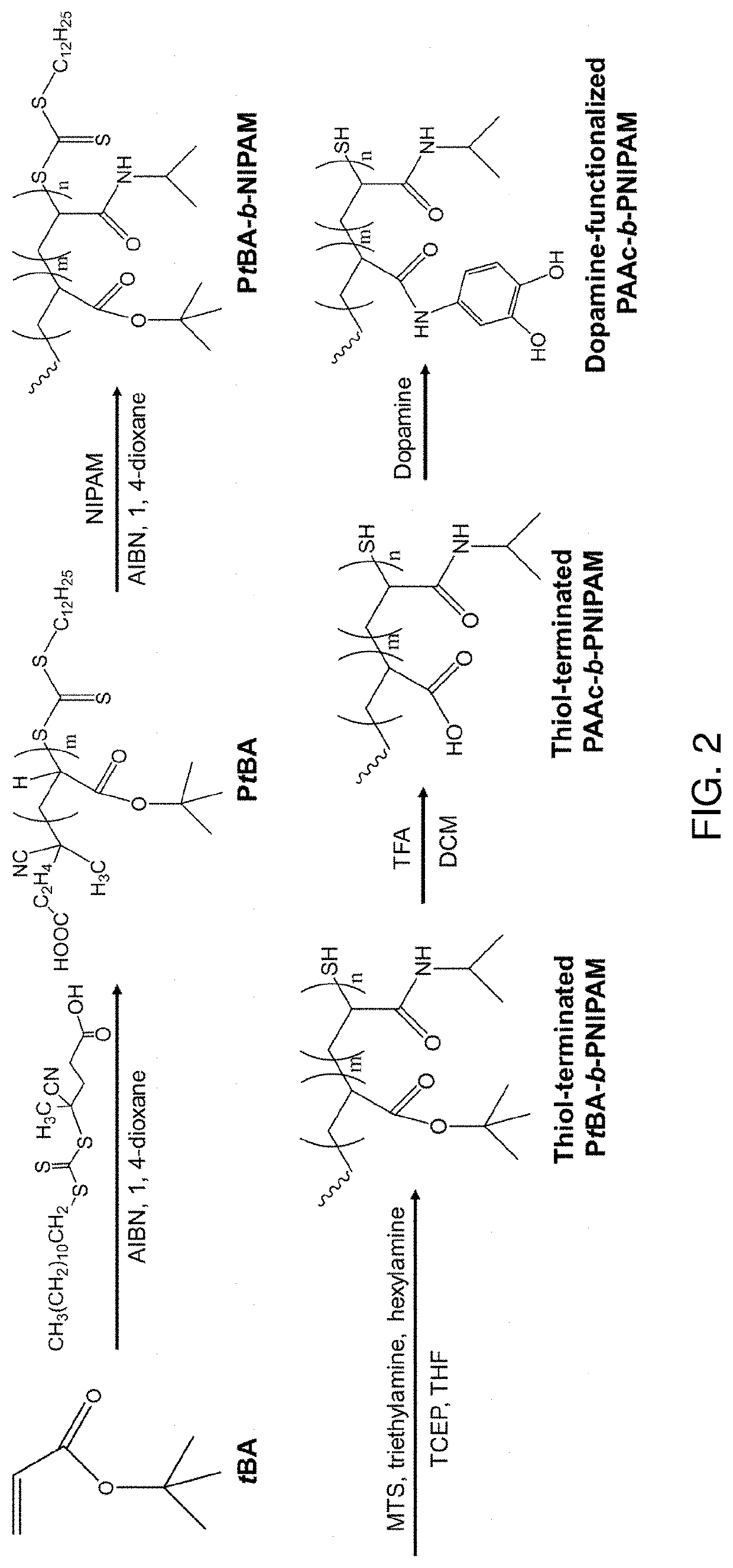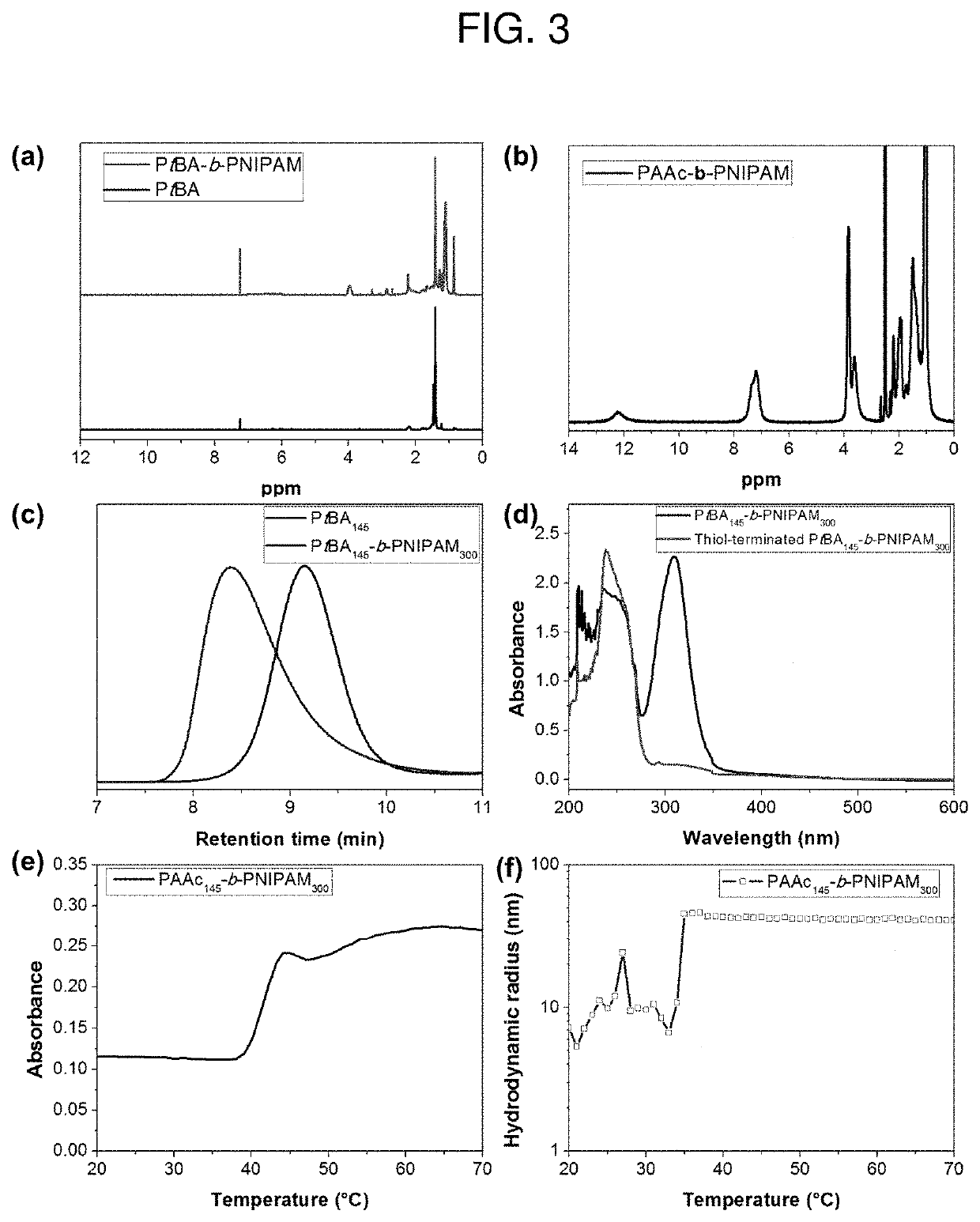Bimetallic nanoparticles with stimuli-responsiveness, process for producing the same, and use thereof
- Summary
- Abstract
- Description
- Claims
- Application Information
AI Technical Summary
Benefits of technology
Problems solved by technology
Method used
Image
Examples
example 1
and Methods
[0074]1-1: Materials
[0075]Gold (III) chloride trihydrate (HAuCl4.3H2O), sodium citrate tribasic dehydrate (99.0%), silver nitrate (99%), 4-cyano-4-[(dodecylsulfanyl thiocarbonyl) sulfanyl]pentanoic acid (CDTPA), tert-butyl acrylate (tBA), trifluoroacetic acid, hexylamine, methyl-methanethiosulfonate (MTS), hexylamine, triethylamine, tris(2-carboxyethyl)phosphine hydrochloride (TCEP), sulfo-N-hydroxysuccinimide ester (sulfo-NHS), phosphate buffered saline (PBS), mercaptobenzoic acid (MBA), dichloromethane (DCM), 1,4-dioxane, diethyl ether, tetrahydrofuran (THF), chloroform, isopropanol (IPA) and methanol were purchased from Sigma-Aldrich (St Louis, Mo., USA). Magnetic beads (MBs) with a carboxylic group were purchased from Bioneer Corporation (Daejon, South Korea). Thiol poly(ethylene glycol) (PEG) carboxylic acid (Molecular weight: 3000) was obtained from Polyscience (Warrington, Pa.). In addition, 1-ethyl-3-(3-dimethylaminopropyl) carbodiimide (EDC) was purchased from Th...
example 2
[0095]FIG. 1 shows schematic views of an eccentric- and heterodimeric form of compartmentalized BMNPs with anisotropy via competitive ligand coordination between two immiscible ligands at different molar ratios onto Au seeds. The present inventors prepared compartmentalized BMNPs by using both competitive coordination of two ligands to form completely demixed domains and catechol-mediated redox chemistry using dopamine-modified PAAc-b-PNIPAM. As shown in FIG. 1(a), PAAc-b-PNIPAM and MBA were competitively coordinated onto the Au seeds via Au-thiol binding at a molar ratio of MBA to PAAc-b-PNIPAM of 7.75, and dopamine was covalently bound within the PAAc block. Silver nitrate was added to form the Ag compartment on the dopamine-modified PAAc block via coupling of catechol oxidation and reduction of silver ions, resulting in formation of eccentric BMNPs as shown in the inset TEM image. In addition, the MBA molecule as a Raman dye was simultaneously encapsulated within the nanogap via ...
PUM
 Login to View More
Login to View More Abstract
Description
Claims
Application Information
 Login to View More
Login to View More - R&D
- Intellectual Property
- Life Sciences
- Materials
- Tech Scout
- Unparalleled Data Quality
- Higher Quality Content
- 60% Fewer Hallucinations
Browse by: Latest US Patents, China's latest patents, Technical Efficacy Thesaurus, Application Domain, Technology Topic, Popular Technical Reports.
© 2025 PatSnap. All rights reserved.Legal|Privacy policy|Modern Slavery Act Transparency Statement|Sitemap|About US| Contact US: help@patsnap.com



